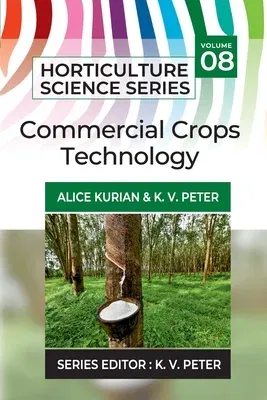Commercial crops comprises of crops grown on a plantation scale and are
of pivotal importance to the economy and export trade of many developing
and developed countries. Commercial crops with long history of
cultivation and active support of research and developmental efforts
have made great strides in technological advancements. At regular
intervals it is necessary to take stock of newly acquired knowledge in
crop production and to reason out age-old experience. The book
'Commercial Crops Technology' comprehends the scattered information and
provides latest technological advances in nine crops grown on a
plantation scale. The book is organized into 10 s with an introductory
and one each allotted to nine commercial crops (Areca Nut, Cashew,
Cocoa, Coconut, Coffee, Oil palm, Palmyra, Rubber and Tea). s have been
designed keeping view of the rapid progress and challenges in the field
of sustainable crop production. Product diversification has also been
given due importance in the light of globalization and free trade. The
introductory gives an insight into the present scenario of plantation
crop production, its importance, geographical distribution, soils
growing, integrated nutrient management, crop protection strategies,
cropping and farming systems, management of drought, organic farming,
clean development mechanism, implications of IPR and strategies and
recommendations. Individual s on crops covers updated information on
crop improvement, biotechnology, crop production and management, crop
protection and post harvest handling with emphasis on integrated
nutrient and pest management, organic crop production and value
addition, besides providing basic information on origin and
distribution, production trends, botany and R and D institutions. Future
outlook on these crops would enable to chalk out achievable programmes
and projects. The bibliography facilitates further reading. This
publication will be useful to everyone who are associated with
commercial crops - farmers, estate managers, extension workers,
technologists, policy makers, researchers and students.


